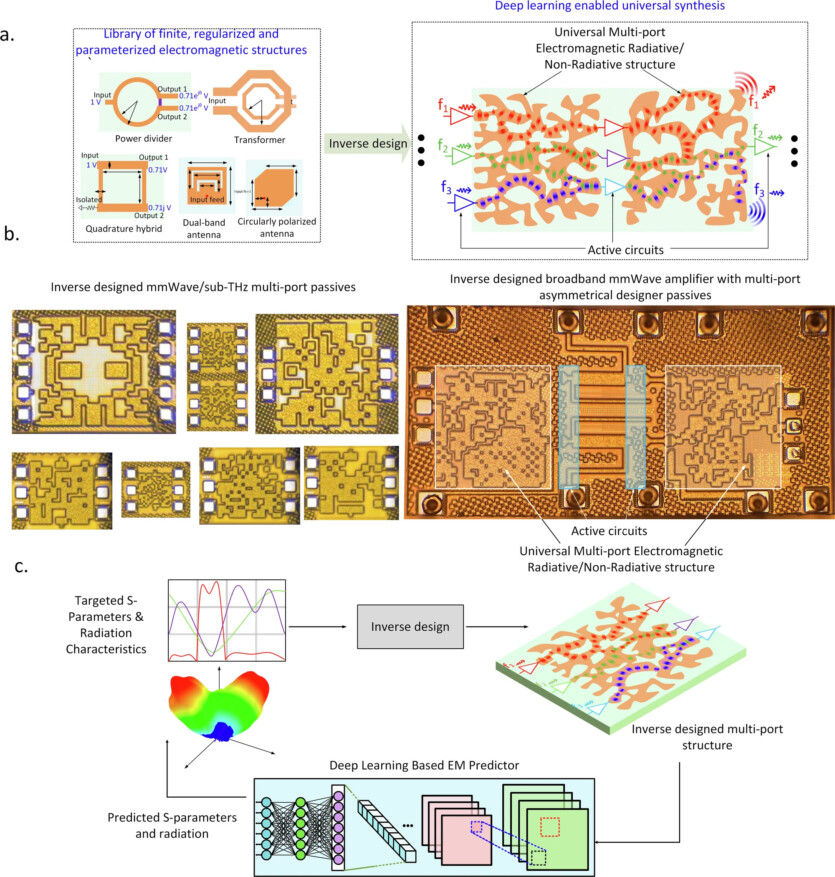
In a new study, american and indian scientists propose to design chips, using the algorithm deep learning of AI and the subsequent creation of circuits and components.
Using artificial intelligence, researchers from Princeton University and the Indian Institute of Technology Madras have demonstrated a method of “reverse engineering”. It involves, scientists starting with the desired properties of materials and then developing a design based on them.
Several chips have been created, using this algorithm, that have proven to be very efficient, but no one really understands why they are so effective. According to the study’s lead author, a professor of electrical and computer engineering at Princeton, Kaushik Sengupta, people don’t understand how it works, but these chips can work more efficiently.
The AI-enabled method is development-oriented wireless chips used in high-frequency applications such as 5G networks, radar systems, and autonomous vehicles. Typically, engineers start with off-the-shelf templates and manually optimize or improve designs through iterative modeling and testing It takes a lot of time and effort and requires a high level of knowledge, which limits the ability to speed up the process of improving chips.
American and Indian researchers have trained convolutional neural networks to understand the complex relationship between the geometry of chips and the electromagnetic processes in them. AI models are able to predict how the proposed design will work, working with the type of materials that are not usually used.

The study proposed a number of application options: from simple single-port antennas to complex multi-port RF structures such as filters or power dividers. Developed with the help of AI compact antennas operating at two different frequencies, improve the performance of multi-band devices.
In just a few minutes, AI synthesized filters with precise bandpass characteristics, which would have previously taken days or weeks. The ability to quickly develop high-performance circuits can accelerate the development of telecommunications, autonomous systems, and other industries. This approach allows engineers to focus on innovation rather than routine optimization.
The most interesting thing, however, is the new types of designs offered by AI. These designs are significantly different from those proposed by humans.
“We create complex structures with random shapes, and when connected to chains, they achieve previously unattainable performance. In classical designs, these circuits and electromagnetic elements are carefully assembled together, piece by piece, so the signal travels through the chip the way we want it to. By changing these structures, we add new properties. We used to have a limited set of options, but now we have a much wider range of options”, — says Professor Kaushik Sengupta.
Wireless chips are a combination of standard electronics (e.g., computer chips) and electromagnetic components, such as antennas or signal splitters. Although this study focuses on radio frequencies and sub-terahertz frequencies, the principles of AI-aware design can be extended to computer chips and even quantum computing.
It is obvious that artificial intelligence will play an increasingly important role in the development of chips, in particular. However, scientists still don’t understand it, what guides AI when developing their own projects. This makes it difficult for engineers to understand and predict the behavior of such systems, which can lead to unpredictable failures or vulnerabilities, especially in critical areas.
In addition, fixing bugs and eliminating vulnerabilities can be more difficult than in human-made systems In practice, an overreliance on. AI can undermine the fundamental knowledge and skills of human developers, creating a gap in expertise in the event of a technology failure or unavailability.
The results of the study were published in the journal Nature
Source: ZME Science

Spelling error report
The following text will be sent to our editors: